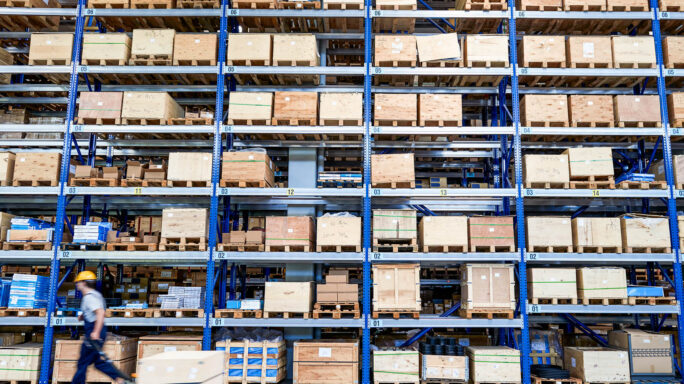Business planning
Direct vs indirect distribution: Choosing a channel

How your product reaches your consumer can be just as important as the problem it solves. An efficient delivery mechanism can positively impact your customer experience – the beating heart of modern branding – as well as your bottom line.
To help you understand how products reach the end consumer and perhaps think about which channel best suits your business, meet the fictional Lindiwe. She’s a local entrepreneur who’s about to take beautifully designed, build-it-yourself work sheds to market.
What’s the difference between direct and indirect distribution?
Lindiwe can see her target market clearly: a generation of knowledge workers who need a quiet, comfortable space at home to apply their creative minds. But how to reach them?
There are two channels she can use: direct distribution or indirect distribution.
Luckily for Lindiwe, she has an aunt in the logistics business (rather than an uncle named Joshua) who can succinctly define each channel:
Direct distribution
Aunt: Using this channel, you control and are responsible for the workings of your entire supply chain. The consumer buys from you directly.
Lindiwe applies her mind to envisage what this direct channel might look like for her business. She comes up with the following:
- In addition to her manufacturing facility, she’ll need a warehouse to store enough of her flat-packed work sheds to meet rising demand.
- To efficiently manage the procurement, production, inventory, sales, and customer service functions, she’ll need to invest in an integrated ERP software solution.
- For the delivery, support, and return functions, she’ll also need vehicles and well-trained employees.
Indirect distribution
Aunt: If you decide on this channel, an intermediary, like a retailer or wholesaler, will sell your product on your behalf, taking responsibility for your supply chain or part thereof.
Lindiwe wants to make an informed decision before committing to either channel, so she goes through the same process, imagining what the indirect channel would entail. The following comes to mind:
- She’ll need to investigate which intermediary has the best access to her target market to ensure her product lands in front of the right eyes.
- Whoever she partners with will also engage directly with her customers, so she’ll need to pick an intermediary she trusts to represent her brand and its values correctly.
- She’ll also need to ensure that any agreement between her business and said intermediary is clearly defined in terms of who is responsible for what and who gets what money.
Lindiwe is gravitating towards the direct distribution channel; she has mild control tendencies and is in a love affair with her product, so putting her precious sheds in the hands of an overworked forklift driver in some messy warehouse gives her gooseflesh.
But before she decides, auntie logistics encourages her to do her research (“This isn’t a charity,” she says) around the pros and cons of each distribution channel. She decides to start with her favourite.
Pros and cons of direct distribution
After putting her monopolistic search engine to work, Lindiwe finds three things she loves about the direct distribution channel – and one thing that concerns her:
Pro #1: Control the customer experience
Lindiwe’s strategy is to grow her sales through word-of-mouth and social media, so she needs brand advocates. The direct distribution channel provides more opportunities to create them. By engaging directly with her customers, she can build better relationships and gather coalface data that can be used to constantly improve how her customers experience her brand.
Pro #2: Control costs
Running a business is an iterative process. If something works, you keep doing it; if not, you try something else. By owning her supply chain, Lindiwe can change how it operates to find the most efficient and cost-effective setup.
Pro #3: Control the money
Without a middleman in her supply chain, the revenue Lindiwe earns from selling her work sheds accrues directly to her bottom line. That’s great, she thinks. Who doesn’t want to profit more from what they make?
Con #1: Big upfront investment
The cost of warehousing and delivery vehicles is not in Lindiwe’s budget. She’ll need to either borrow money to make such purchases or rent the assets from someone else. Both will put pressure on her cash flow and, therefore, her ability to plough money back into her business to achieve scale.
Pros and cons of indirect distribution
If you don’t already know this about Lindiwe, she’s thorough. Despite her reservations about the indirect distribution channel, she conducts her research and is surprised to find two things she really likes. She’s less surprised to find two things she doesn’t:
Pro #1: More product focus
This benefit has thrown a spanner in Lindiwe’s thinking. By essentially outsourcing part of her supply chain using indirect distribution, she will have more time to refine her product and its support service. How her customers experience her product is what’s most important to her.
Pro #2: Market reach
After exploring what retailers and wholesalers can do for their suppliers, Lindiwe realises she underestimated their reach and, therefore, the potential scale the indirect channel could bring to her business. And the more people she can reach, the more people she can make happy.
Con #1: High fixed costs
Unlike the direct distribution channel, where her upfront fixed costs would allow her margins to expand as her revenue grows, the indirect distribution channel comes with costs that increase the more she sells.
Con #2: More competition
Given the bespoke nature of her product, Lindiwe hasn’t come across any direct competitors yet. But selling her product through a retailer or wholesaler comes with the risk of increased competition. There’s also no guarantee that her product will be displayed or treated advantageously by the intermediary.
Direct or indirect: Which distribution channel is best?
As you can see from Lindiwe’s exploration of direct and indirect distribution channels, there’s no simple answer to the question above. It depends, among other things, on the product, the vision behind it, the people involved, the target market, the available retailers and wholesalers, and the financial resources of the manufacturer.
Which one will Lindiwe choose? Given what you now know about direct and indirect distribution channels, we’ll leave the fate of her beloved work sheds in your capable hands.









Ask the author a question or share your advice